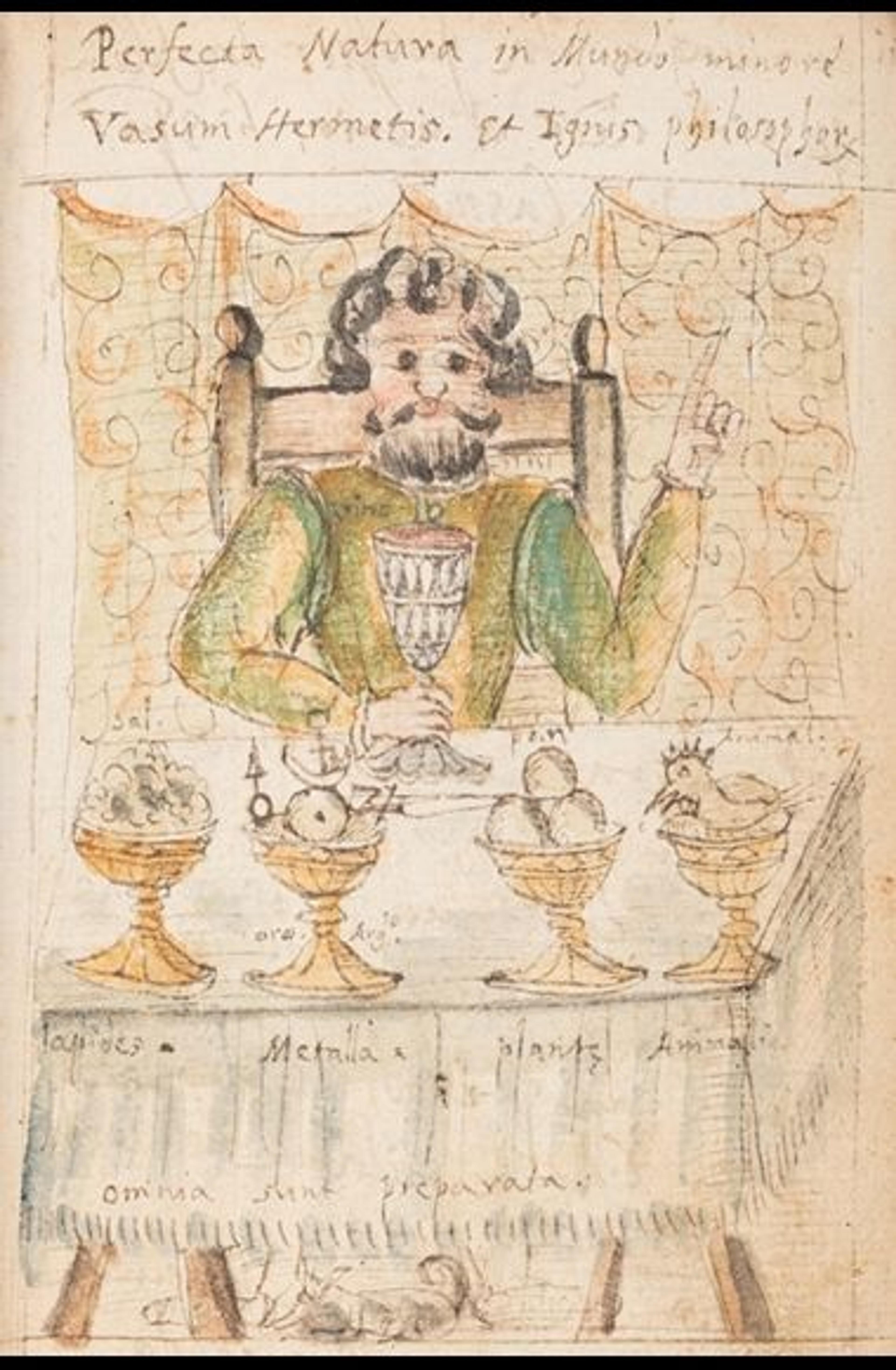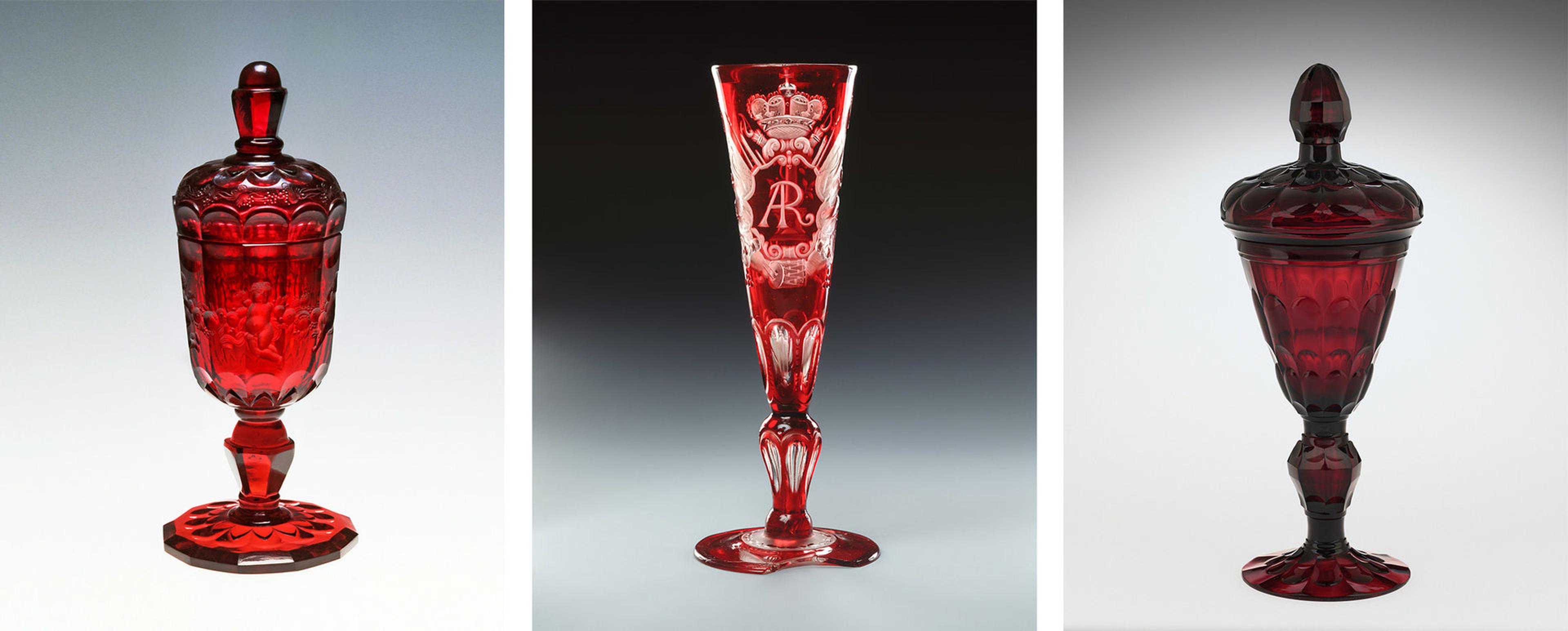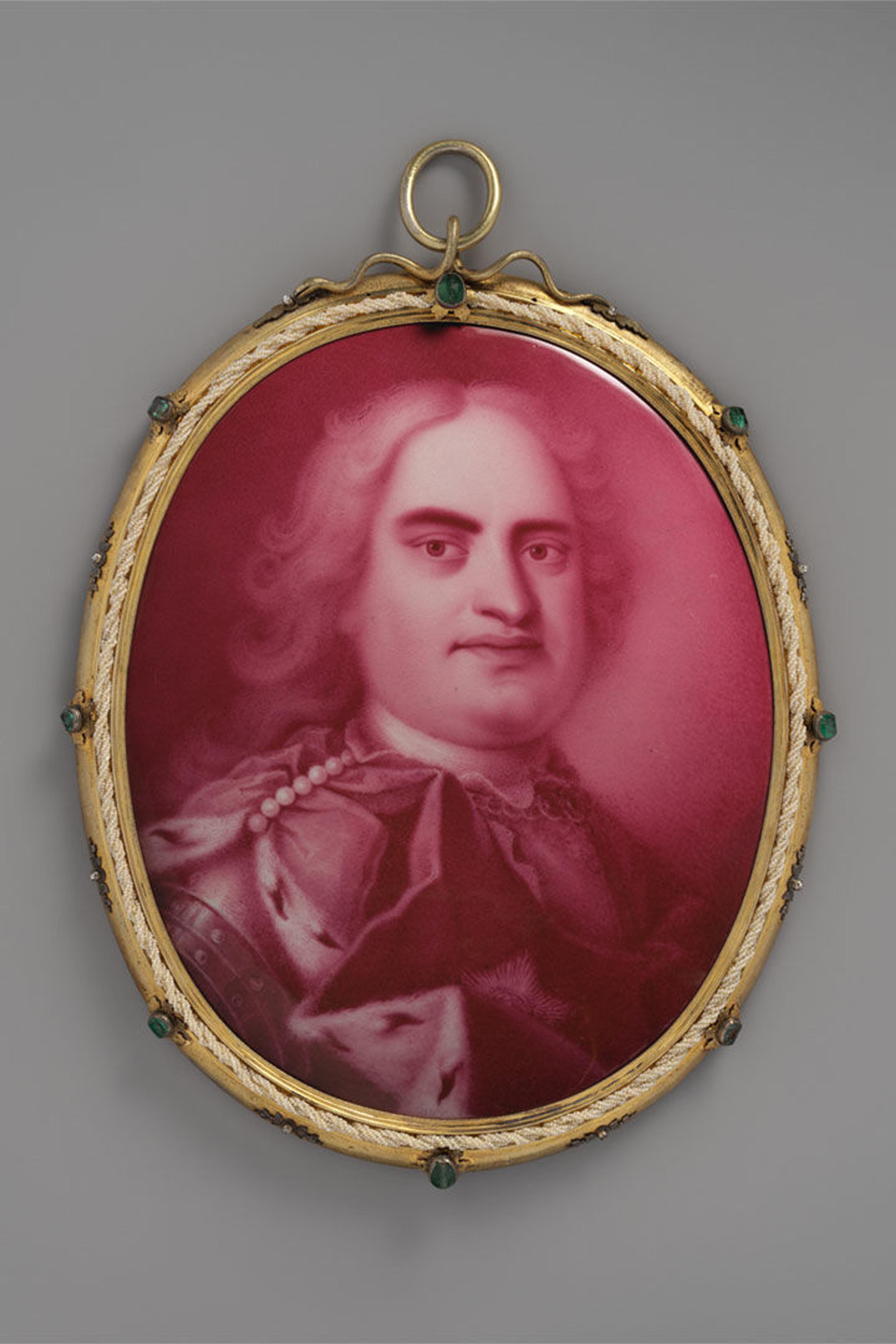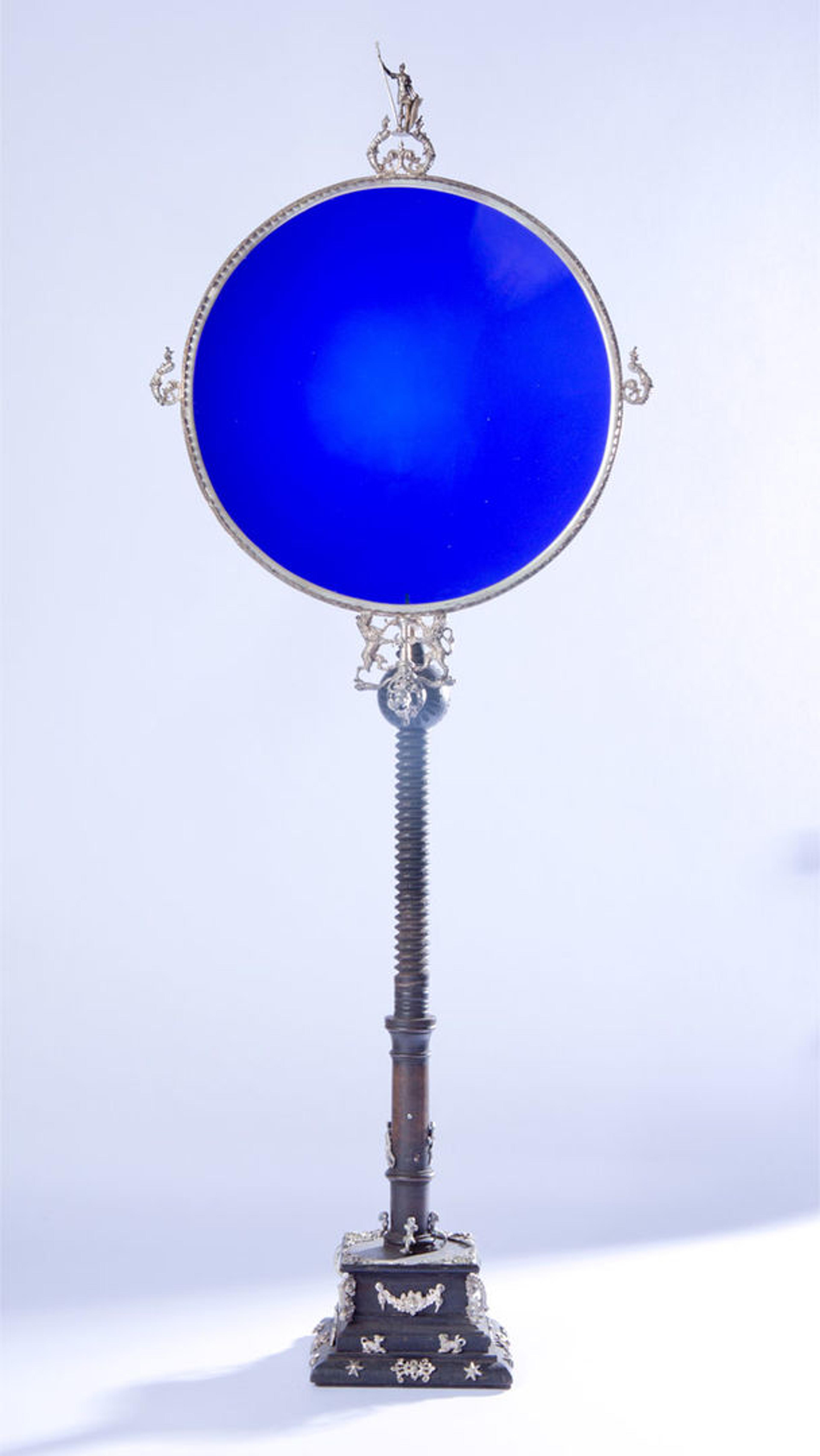Alchemy, Science, and Innovations in the Decorative Arts

David Teniers the Younger (1610–1690), The Alchemist, ca. 1643–45. Oil on panel, 20 1/8 x 28 in (51 x 71 cm). Herzog Anton Ulrich Museum, Braunschweig (139)
O telescope, instrument of much knowledge, more precious than any scepter! Is not he who holds thee in his hand made king and lord of the works of God!
So exclaimed astronomer Johannes Kepler in the preface to Dioptrice (1611). For Kepler and other seventeenth-century figures, anyone who mastered nature could master the world. Making Marvels: Science and Splendor at the Courts of Europe focuses on the ways that Renaissance and Baroque rulers in particular enacted this attitude that knowledge could lead to power, by using beautifully made objects of science to express their own magnificence.
During the Renaissance and early Enlightenment, also known as the early modern period, "science" was more expansive than it is today; it included philosophy, theology, poetry, and alchemy. The seventeenth century joined explanatory theories of the natural world (previously the realm of theologians and university-trained philosophers) and sensory engagement with nature (the realm of artisans, who achieved their understanding through the mechanical arts). The result was an early version of what we now recognize as experimental science.
The roots of this hybrid kind of knowledge can be found in early writings on alchemy. Remembered in today's popular culture as the quest for gold or for immortality promised by the philosophers' stone, the alchemy of the early modern period also included medicine and the manufacture of chemical products. Alchemy was based in Hermetic Greco-Egyptian texts and artisanal recipe books that had arrived in Europe via the Islamic world. These books synthesized workshop processes with theories on the nature of matter. By the sixteenth century, their core concepts and procedures had been articulated through the spirit-packed world of Renaissance Neoplatonism and even through a Christianized version of the Jewish Kabbalah.

Left: "Perfect Nature of the Microcosm," from Antonio Neri's Il tesoro del mondo, fol. 11r (Florence, 1599). Ferguson Collection, Department of Special Collections, Glasgow University Library (MS Ferguson 67)
In addition to studying these texts, alchemists engaged in activities such as assaying (determining the components of metal alloys), mining, metalworking, pigment- and dye-making, distilling, the production of ceramics, the manufacture of medicines, and glassmaking, and they were tied to artisans through common skills, materials, and equipment. An example of this connection between alchemy and other types of production is seen here in an illustration from an unpublished manuscript by alchemist and glassmaker Antonio Neri. It groups lapidary work, metallurgy, baking, and cooking as alchemical activities, and pictures their yield as the fruit of the alchemist's attempts to perfect the products of nature.
The "noble art," as alchemy was known at its height in the sixteenth and seventeenth centuries, was widely patronized and practiced in many European courts, including those of Hohenlohe, Brandenburg, Bavaria, Braunschweig-Lüneburg, Württemberg, Hessen-Kassel, Dresden, and Prague. Emperor Rudolf II, for example, is well known for his patronage of alchemy, and established several workshops in different locations around Prague castle. Many of these were used by the emperor himself, as well as the alchemists Rudolf employed at court. Alchemists, along with artisans, became highly respected sources of knowledge about natural materials and the processes used to replicate and manipulate them.
The widespread patronage of talented alchemists led to important innovations in the decorative arts, most notably in the production of vitreous materials, such as glass and enamel. Both mediums involved the application of fire to transform one material into another (i.e., sand and ash into luminous glass), and as such had longstanding practical and theoretical ties to alchemy. This association added another layer of interest to these beautiful pieces: they were tangible evidence of success in material transformation. Having hired glassmaker and alchemist Johann Kunckel to produce vibrant, raspberry-red gold-ruby glass at his glassworks in Potsdam, Elector Frederick William instructed that the alchemist, "should not cease, to obtain the honor that the first red glass be made here [at the Potsdam glassworks], no matter how much it may cost." For Frederick William, the prospective renown brought to his court for being the first to produce an innovative material through alchemical/artisanal processes far outweighed its development costs. On view in the elector's collection, radiant gold-ruby goblets would signify to well-educated guests the alchemical knowledge fostered at Frederick William's court.

Left: Probably engraved by Gottfried Spiller (1658–1728). Covered goblet with "Fruit Children," before 1700. Gold ruby glass, H. 9 1/8 in. (23.1 cm). Focke-Museum, Bremer Landesmuseum für Kunst und Kulturgeschichte, Bremen (68.253). Center: Ruby glass flute with "AR" monogram, around 1715. German, Dresden. Gold ruby and transparent glass (blown, cut), H. 23 cm. Green Vault, Staatliche Kunstkammlungen Dresden (IV 228). Right: Covered goblet, 1725–35. German, Potsdam. Transparent dark gold ruby glass (blown, cut) 10 9/16 x 3 5/8 in. (26.9 x 9.2 cm). Corning Museum of Glass, Corning, New York, Bequest of Jerome Strauss (79.3.318)
Goblets made from gold-ruby glass were some of the most fashionable collectors' items in the seventeenth century, and examples could be found in nearly every major European collection. The goblet exhibited in Making Marvels, on loan from the Corning Museum of Glass, has a deep hue typical of the gold ruby produced at the Potsdam glassworks after Kunckel's death. Just as Frederick William had hoped, by 1604 the alchemist had perfected a stable recipe for brilliantly colored red glass. It required the addition of a colloidal solution of gold (in which microscopic gold particles are evenly distributed throughout) to a batch of glass. The resulting mixture must then be heated twice: once to melt, and a second time to bring out the color, a process called striking. Kunckel's gold ruby wasn't produced much after his death in 1703, but this cup is no less beautiful, and it evidences the ongoing chemical experimentation supported by the Brandenburg court that produced what Frederick William called a "peculiar rarity."
Frederick William was not the only elector interested in producing gold ruby, and Kunckel was not the only alchemist to work on a recipe. A report on the Saxon factories taken around 1715 records that Johann Friedrich Böttger, an alchemist and inventor employed by Augustus II—Elector of Saxony, King of Poland, and Grand Duke of Lithuania, also known as Augustus the Strong—was also engaged in experiments with ruby glass. Böttger had worked with Kunckel in the first years of the eighteenth century. Unlike Kunckel's recipe, however, pieces made with Böttger's "invention" were "not red throughout, but only on one side, either inside or outside, by which it nevertheless looks as if it were entirely red."[1] A few of these pieces, such as a delicate flute engraved with the monogram "AR," are preserved in the Grünes Gewölbe, in Dresden. Despite the beauty of these pieces, today Böttger is better known for his invention of European hard-paste porcelain with Ehrenfried Walter von Tschirnhaus, on which he also experimented under the patronage of Augustus the Strong.
Though Böttger sought a recipe that would produce a red glass body as faultless and vibrant as Kunckel's, in Dresden colloidal gold was used as a colorant in other art forms as well. Between 1712 and 1720 (around the same time Böttger produced his gold-ruby glass), enamelist to the Dresden court Georg Friedrich Dinglinger created the enamel portrait of Augustus the Strong that was recently bequeathed to The Met's Department of European Sculpture and Decorative Arts. The oval plaquette is one of his earliest attempts to fire a flawless enamel portrait of this size. Dinglinger called the technique his "newly invented Amolier art in monumental enameling," and perfected it only after much experimentation with the recipe. Painted en camaïeu in two or three different shades of a single color, the portrait's robust pink suggests Dinglinger's use of a colloidal-gold solution in the enamel.[2]

Attributed to Georg Friedrich Dinglinger (German, 1666–1720). Portrait of Augustus II, Elector of Saxony, King of Poland, and Grand Duke of Lithuania, after ca. 1712–20. Enamel on copper; silver partially gilt frame set with diamonds, emeralds, and fresh-water-pearls, 11 1/4 x 9 3/16 in. (28.6 x 23.4 cm). The Metropolitan Museum of Art, New York, Bequest of Henry H. Arnhold, 2018 (2019.139.3)

Solar observation shield, first quarter of the 17th century. German, probably Augsburg. Pearwood (ebonized, stained), glass, silver (embossed, cast), 13 x 4 1/8 in. (33 x 10.5 cm). Esterházy Privatstiftung, Burg Forchtenstein–Esterházy Schatzkammer (K 139)
Red was not the only color that was highly prized for its complex recipe. Early modern collectors also desired blue glass, colored with cobalt oxide. The disk of blue glass on loan from the Esterházy Schatzkammer is a beautiful example of a successful recipe. The color is consistent, without much streaking, a sign of a uniform melt and a master artisan. Prince Paul I Esterházy was deeply interested in science and more specifically in alchemy, a passion reflected by his acquisition of this piece. The ebonized pearwood stand, ornamented with fine silver statuettes, is adjustable: the disk may have been used to shield an observer's eyes during examination of the sun's path through the sky. Or even during an eclipse—a function of colored glass suggested in Peter Apian's 1540 Astronomicum Caesareum (a copy of which is also displayed in the exhibition). As with so many of these princely astronomical instruments, however, this disk may have also simply been a display piece, designed to highlight the ability of the alchemists and glassmakers who produced the luminous blue.
These glass and enamel pieces are only a few of the marvels that evidenced a ruler's knowledge of, and power over, the natural world. Making Marvels features many types of scientific objects, from telescopes like those that Kepler praised to automata and valuable imported shells set in elaborate silver mounts. The exhibition reunites the objects of beauty and objects of science that were so entwined in the collections of early modern Europe, where science and splendor were pursued with equal vigor and together helped form a culture of magnificence.
Notes
[1] Dedo von Kerssenbrock-Krosigk, Glass of the Alchemists: Lead Crystal-Gold Ruby, 1650–1750 (Corning, NY : Corning Museum of Glass, c2008).
[2] Volker Weinhold, Unser Weg ist gut!: die wunderbare Werbewelt der DDR (Munich and New York: Prestel, 2007).
Related Content
Making Marvels: Science and Splendor at the Courts of Europe is on view at The Met Fifth Ave through March 1, 2020.
An incredible 41 carats, the "Dresden Green" diamond is the largest known natural green diamond. Read how the "Dresden Green" become a symbol of Saxon royalty.
Among Making Marvels's delights are a number of automata. Watch a playlist of these early moving machines in motion.
Ana Donefer-Hickie
Ana Matisse Donefer-Hickie is a research associate in the Department of European Sculpture and Decorative Arts.